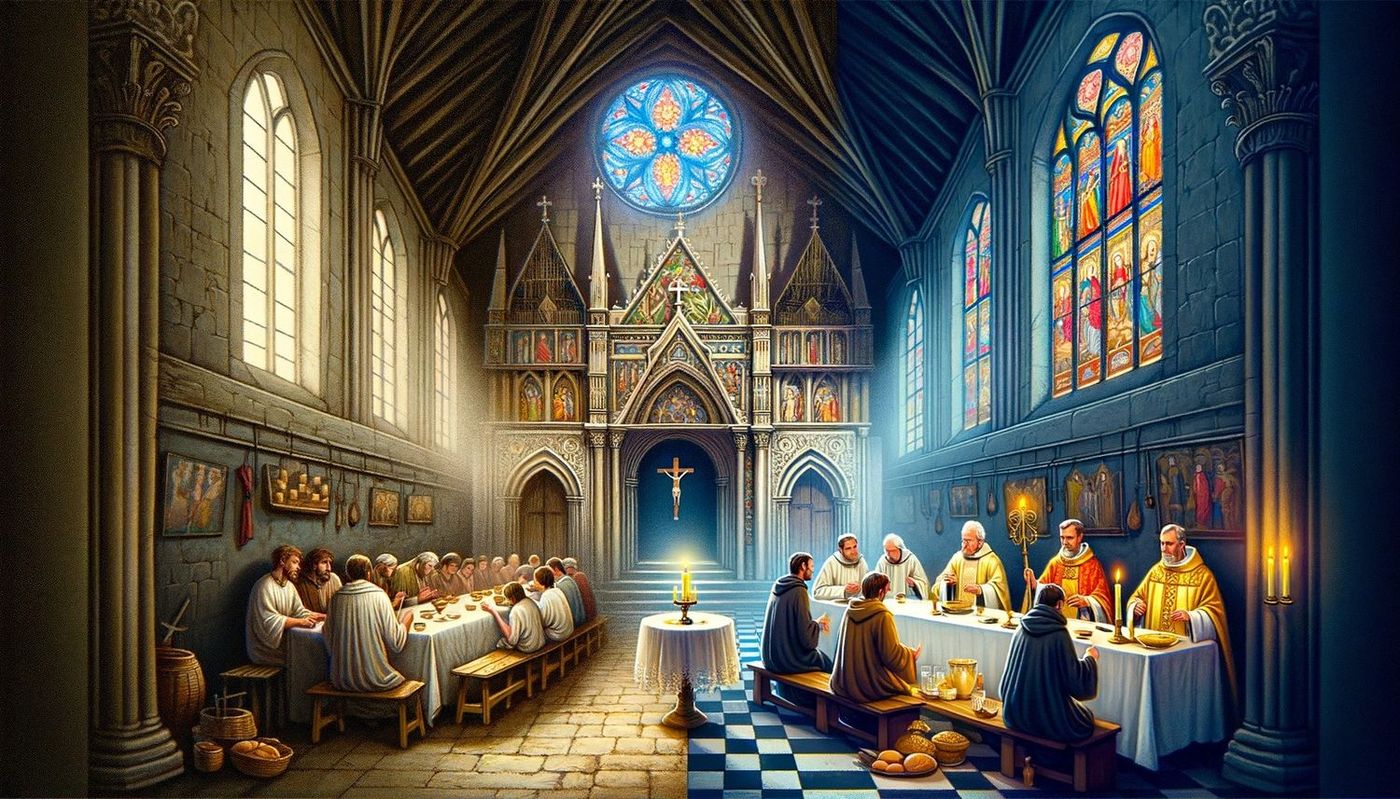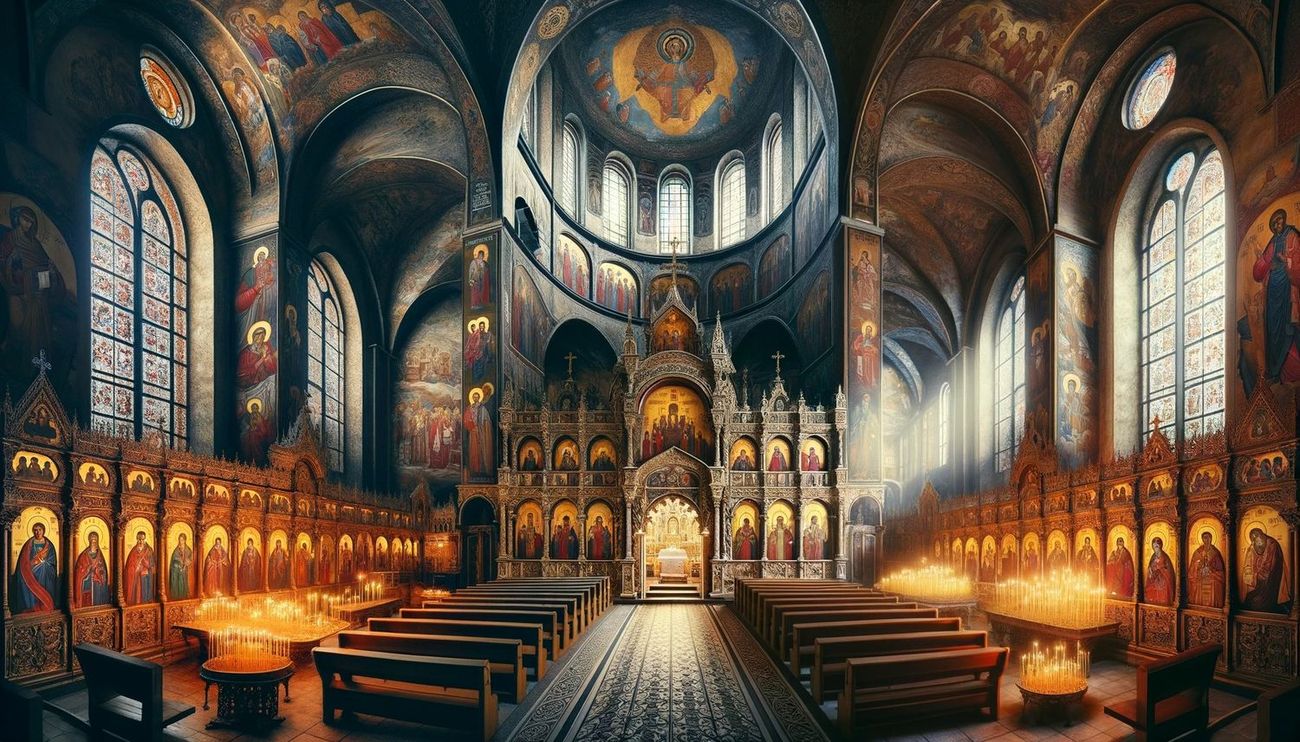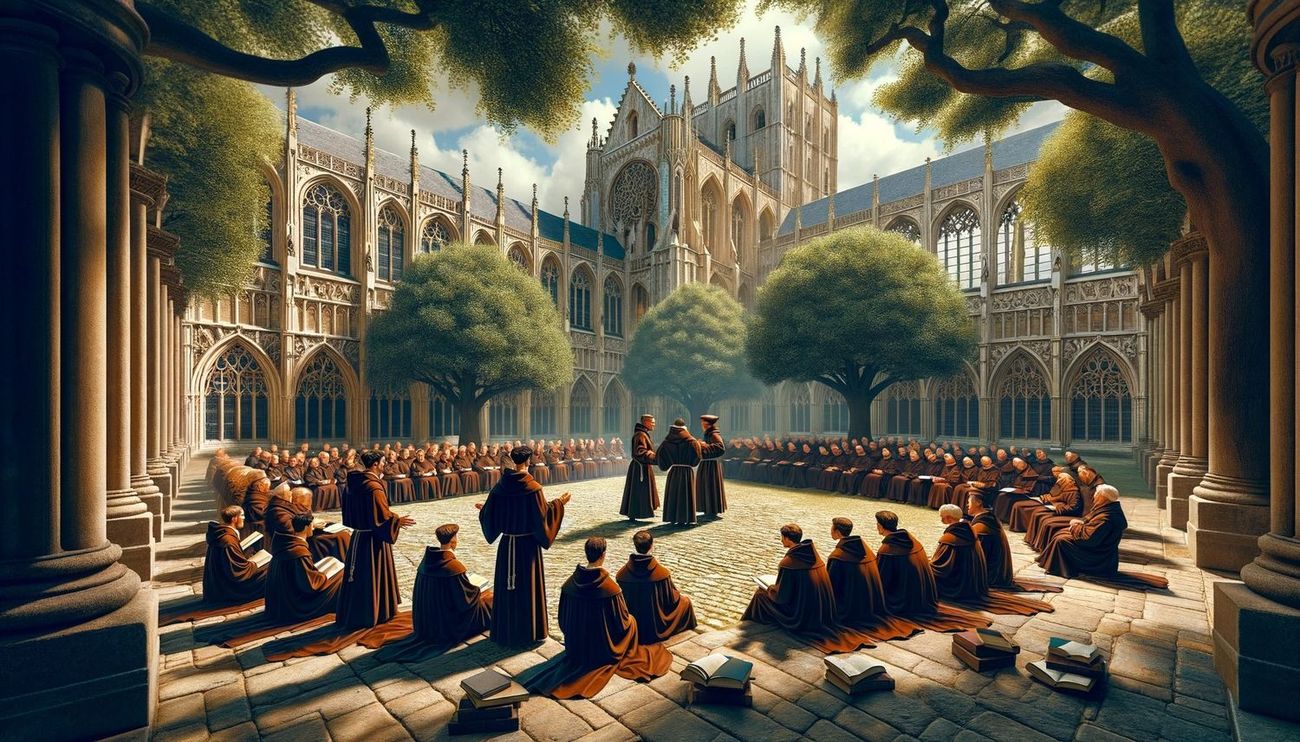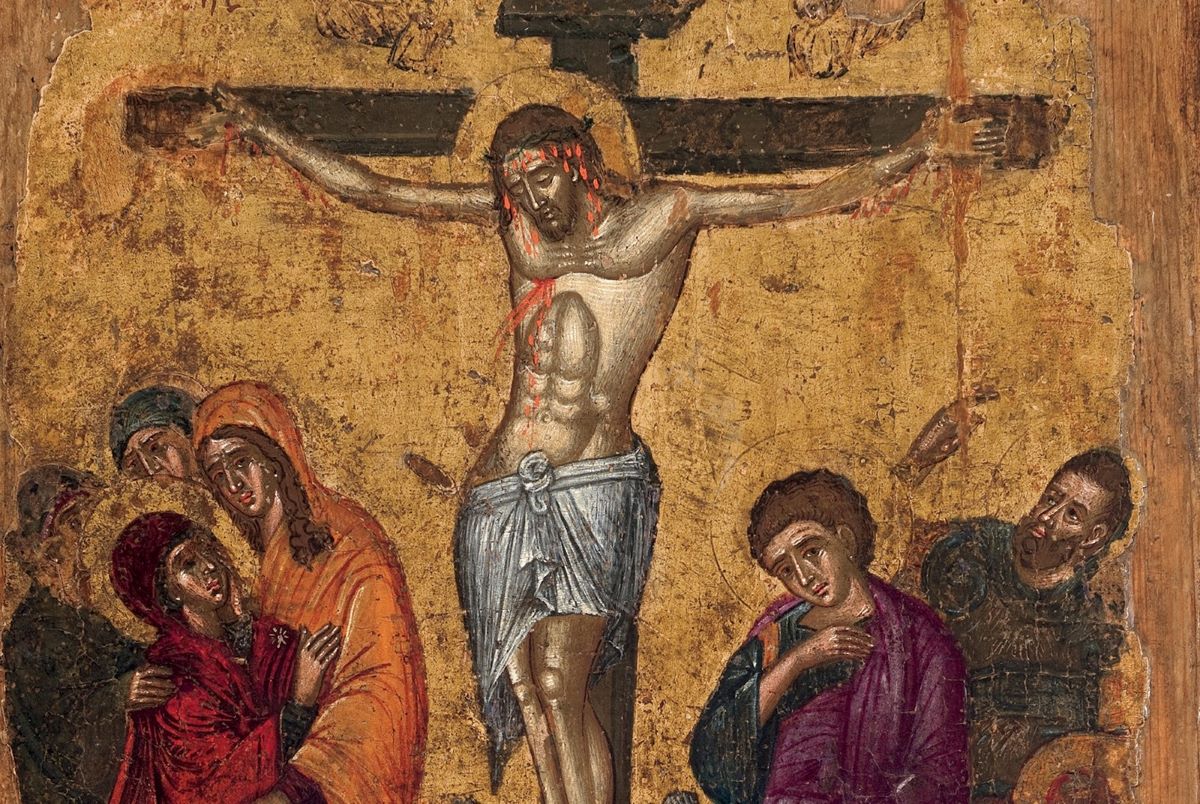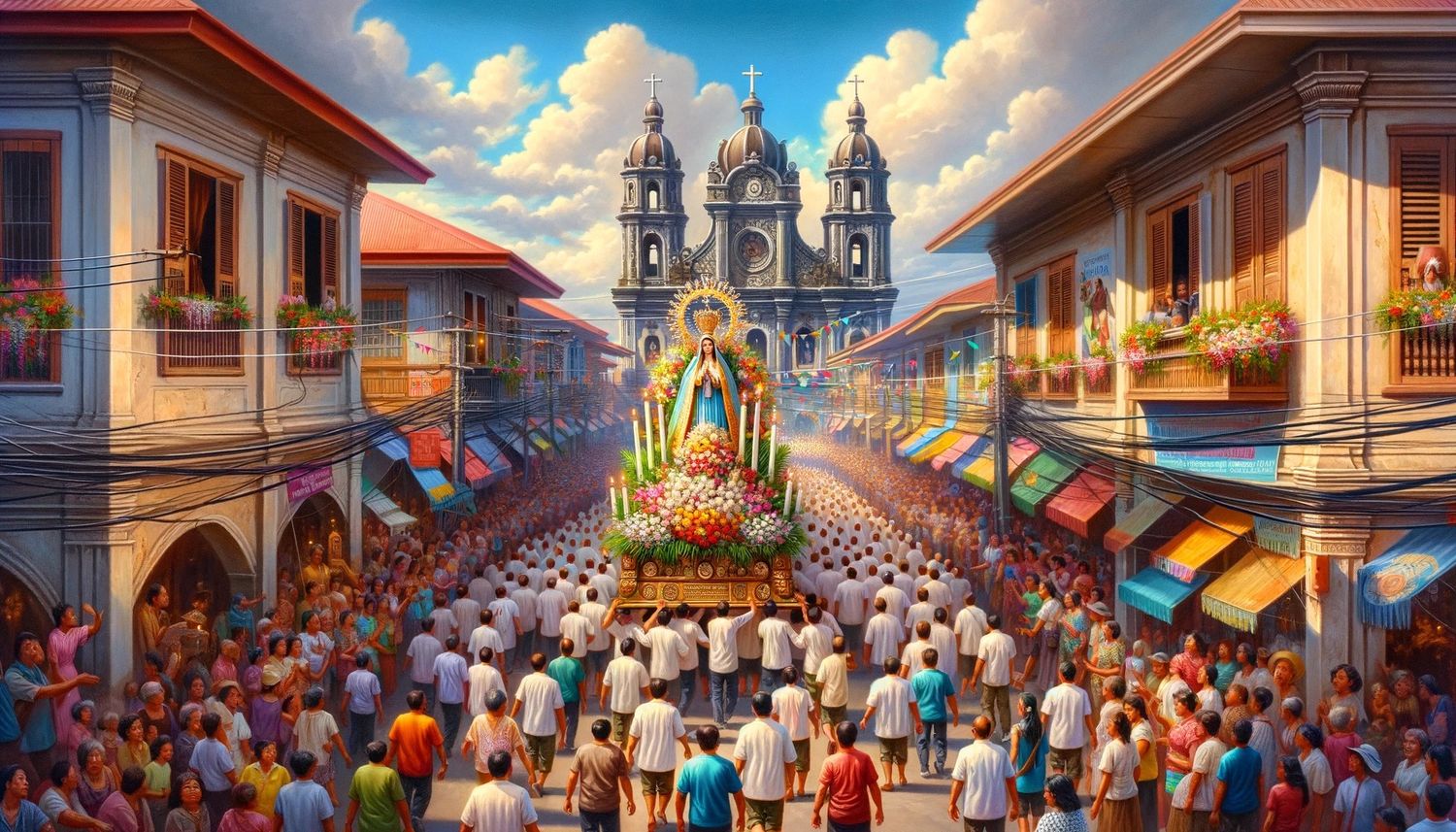Home>Theology and Spirituality>Which Had An Important Role In The Spread Of Both Roman Catholicism And Orthodox Christianity?


Theology and Spirituality
Which Had An Important Role In The Spread Of Both Roman Catholicism And Orthodox Christianity?
Published: February 15, 2024
Ericka Andersen, an editor at Christian.net, expertly merges digital strategy with content creation, focusing on faith and societal issues. Her communication skills enhance the platform's engaging narratives, fostering meaningful dialogue on belief's impact on society.
Discover the pivotal role of theology and spirituality in the propagation of Roman Catholicism and Orthodox Christianity. Explore their influence and significance in religious history.
(Many of the links in this article redirect to a specific reviewed product. Your purchase of these products through affiliate links helps to generate commission for Christian.net, at no extra cost. Learn more)
Table of Contents
Introduction
The spread of both Roman Catholicism and Orthodox Christianity was profoundly influenced by a confluence of historical, political, and cultural factors. This pivotal period in history saw the emergence of two great empires, the Roman Empire and the Byzantine Empire, each playing a significant role in the dissemination of Christianity. Additionally, the tireless efforts of missionaries, coupled with the impact of trade and commerce, contributed to the widespread adoption of these Christian traditions.
The interplay of these multifaceted elements created a rich tapestry that shaped the trajectory of Christianity, leaving an indelible mark on the religious landscape of the ancient world. As we delve into the historical intricacies of these influential forces, we gain a deeper understanding of the complex dynamics that propelled the expansion of Roman Catholicism and Orthodox Christianity.
The Role of the Roman Empire
The Roman Empire played a pivotal role in the propagation of both Roman Catholicism and Orthodox Christianity. At the onset of Christianity's emergence, the Roman Empire encompassed a vast expanse of territories, fostering an environment ripe for the dissemination of new religious ideologies. The reign of Emperor Constantine the Great marked a significant turning point in the history of Christianity. In 313 AD, he issued the Edict of Milan, which granted religious tolerance to Christians, effectively ending the persecution they had endured for centuries. This edict not only ensured the safety of Christians but also paved the way for the official recognition of Christianity within the Roman Empire.
Furthermore, Emperor Theodosius I's declaration of Christianity as the state religion in 380 AD solidified the religion's prominence within the empire. The patronage and endorsement of Christianity by successive Roman emperors provided a powerful impetus for its widespread acceptance among the populace. The construction of grand basilicas and churches across the empire served as physical manifestations of the empire's embrace of Christianity, further solidifying its influence.
The hierarchical structure of the Roman Empire also facilitated the dissemination of Christianity. The administrative efficiency of the Roman government enabled the swift transmission of religious decrees and edicts, ensuring uniformity in religious practices across the empire. Additionally, the extensive network of Roman roads and sea routes expedited the movement of missionaries and facilitated the exchange of religious ideas, contributing to the rapid spread of Christianity.
Moreover, the Roman Empire's collapse in the west in 476 AD had a profound impact on the dissemination of Christianity. As the western territories disintegrated, the Eastern Roman Empire, also known as the Byzantine Empire, emerged as a bastion of Christianity, preserving and perpetuating its traditions.
In essence, the Roman Empire's endorsement of Christianity, coupled with its expansive infrastructure and administrative prowess, significantly contributed to the widespread adoption of both Roman Catholicism and Orthodox Christianity. This pivotal role in shaping the religious landscape reverberates through history, underscoring the enduring influence of the Roman Empire on the development of Christianity.
The Role of the Byzantine Empire
The Byzantine Empire, with its capital in Constantinople, played a pivotal role in the spread and consolidation of both Roman Catholicism and Orthodox Christianity. Following the division of the Roman Empire into the Western and Eastern realms, the Byzantine Empire emerged as a formidable stronghold of Christianity in the eastern Mediterranean.
Under the reign of Emperor Constantine the Great, who established Constantinople as the new imperial capital in 330 AD, the Byzantine Empire became a bastion of Christian influence. The emperor's patronage of Christianity and the construction of magnificent churches and religious structures solidified the religion's prominence within the empire. The Hagia Sophia, an architectural marvel and a testament to Byzantine grandeur, stands as a testament to the empire's commitment to Christianity.
The Byzantine Empire's enduring legacy in the realm of Christianity is exemplified by the pivotal role it played in the doctrinal and theological developments of the faith. The Ecumenical Councils, convened in cities such as Nicaea, Constantinople, and Chalcedon, were instrumental in defining key aspects of Christian doctrine and orthodoxy. These councils addressed theological controversies and formulated creeds that continue to shape the beliefs of both Roman Catholic and Orthodox Christians to this day.
Furthermore, the Byzantine Empire served as a bulwark against external threats to Christianity, defending its borders against incursions from various forces, including the Sassanid Empire and later the expanding Islamic Caliphates. This geopolitical stability provided a conducive environment for the preservation and propagation of Christian teachings and traditions.
The Byzantine Empire's rich cultural and artistic heritage also contributed to the dissemination of Christianity. Iconography, mosaics, and religious art flourished, serving as powerful visual expressions of Christian faith and doctrine. The enduring legacy of Byzantine art continues to inspire and influence Christian artistic traditions.
In essence, the Byzantine Empire's unwavering commitment to Christianity, coupled with its theological contributions, cultural influence, and geopolitical significance, profoundly shaped the trajectory of both Roman Catholicism and Orthodox Christianity. The empire's enduring impact reverberates through the annals of Christian history, underscoring its pivotal role in the development and dissemination of the Christian faith.
The Role of Missionaries
The spread of both Roman Catholicism and Orthodox Christianity was significantly propelled by the dedicated efforts of missionaries who traversed vast territories, braving formidable challenges to disseminate the teachings of Christianity. These intrepid emissaries played a pivotal role in carrying the message of the Christian faith to distant lands, transcending linguistic and cultural barriers to sow the seeds of Christianity.
Missionaries, driven by unwavering zeal and conviction, embarked on arduous journeys to regions beyond the heartlands of the Roman and Byzantine Empires. Their endeavors were characterized by resilience, adaptability, and a deep sense of purpose as they ventured into unfamiliar territories, often encountering diverse indigenous belief systems and cultural practices.
The missionary endeavors of luminaries such as Saint Paul, Saint Patrick, Saint Cyril, and Saint Methodius exemplify the indelible impact of these emissaries on the expansion of Christianity. Saint Paul, renowned for his missionary voyages across the Mediterranean world, played a pivotal role in establishing Christian communities and spreading the teachings of Jesus Christ. His epistles, contained in the New Testament, continue to serve as foundational texts for Christian theology and ethics.
Saint Patrick, the patron saint of Ireland, is celebrated for his missionary work in evangelizing the people of Ireland, contributing to the Christianization of the island. His missionary efforts left an enduring legacy, shaping the religious and cultural landscape of Ireland.
Saints Cyril and Methodius, the "Apostles to the Slavs," undertook the formidable task of translating the Bible and liturgical texts into the Slavic language, fostering the development of Slavic Christianity and laying the groundwork for the Orthodox Church's influence in Eastern Europe.
The missionary endeavors of these and countless other dedicated individuals were instrumental in fostering the widespread adoption of Christianity, contributing to the formation of enduring Christian communities across diverse geographical regions.
Moreover, the missionary zeal extended beyond geographical boundaries, influencing the cultural and intellectual realms. Missionaries played a pivotal role in the preservation and transmission of knowledge, contributing to the development of written languages and the preservation of historical and religious texts.
In essence, the unwavering commitment and enduring legacy of missionaries in propagating the Christian faith underscore their indispensable role in the dissemination of both Roman Catholicism and Orthodox Christianity. Their tireless efforts and enduring impact continue to resonate through the annals of Christian history, shaping the religious landscape and fostering the global expansion of Christianity.
The Role of Trade and Commerce
The interplay of trade and commerce exerted a profound influence on the spread of both Roman Catholicism and Orthodox Christianity, fostering the dissemination of religious ideas and practices across diverse geographical regions. The bustling networks of trade routes, spanning from the Mediterranean to the Far East, served as conduits for the exchange of goods, ideas, and religious beliefs, catalyzing the diffusion of Christianity beyond the confines of imperial territories.
The flourishing trade routes facilitated the movement of merchants, travelers, and diplomats, creating fertile ground for the transmission of religious ideologies. As goods and commodities traversed vast distances, they carried with them not only material wealth but also cultural and religious influences. Along these trade routes, Christian merchants and travelers played a pivotal role in sharing their faith with diverse communities, sowing the seeds of Christianity in distant lands.
Moreover, the cosmopolitan nature of bustling trade hubs such as Alexandria, Constantinople, and Antioch engendered cultural and religious diversity, providing opportunities for the cross-pollination of religious ideas. The convergence of diverse cultures and belief systems in these vibrant commercial centers facilitated the exchange of religious practices and theological concepts, contributing to the assimilation of Christianity into the fabric of diverse societies.
The maritime trade routes linking the Mediterranean world with the Indian subcontinent and beyond also played a significant role in the dissemination of Christianity. The arrival of Christian merchants and missionaries in ports along these maritime routes facilitated the introduction of Christian teachings to indigenous populations, fostering the establishment of Christian communities in regions far removed from the epicenters of Christian influence.
Furthermore, the economic interconnectedness facilitated by trade and commerce contributed to the cross-cultural fertilization of religious traditions. The encounters between Christian missionaries and adherents of indigenous belief systems engendered dialogue, debate, and the synthesis of religious practices, leading to the emergence of unique expressions of Christianity that resonated with local customs and traditions.
In essence, the dynamic currents of trade and commerce served as conduits for the diffusion of Christianity, transcending geographical barriers and fostering the integration of Christian beliefs into diverse cultural milieus. The enduring legacy of trade and commerce in shaping the global expansion of Christianity underscores the profound impact of economic exchange on the dissemination of both Roman Catholicism and Orthodox Christianity.
Conclusion
In conclusion, the spread of both Roman Catholicism and Orthodox Christianity was intricately intertwined with the historical, political, and cultural dynamics of the Roman and Byzantine Empires, the tireless efforts of missionaries, and the far-reaching impact of trade and commerce. The Roman Empire's endorsement of Christianity, coupled with its expansive infrastructure and administrative prowess, significantly contributed to the widespread adoption of both Roman Catholicism and Orthodox Christianity. The collapse of the western territories and the emergence of the Byzantine Empire as a bastion of Christianity further solidified the religion's prominence, shaping the doctrinal and theological developments that continue to resonate within both traditions.
The unwavering commitment of missionaries, exemplified by luminaries such as Saint Paul, Saint Patrick, and Saints Cyril and Methodius, played a pivotal role in fostering the widespread adoption of Christianity, transcending geographical boundaries and cultural barriers. Their enduring legacy continues to shape the religious and cultural landscapes of diverse regions, underscoring the indelible impact of their missionary zeal.
Furthermore, the interplay of trade and commerce served as conduits for the diffusion of Christianity, fostering the integration of Christian beliefs into diverse cultural milieus. The vibrant trade routes and commercial centers facilitated the exchange of religious ideas and practices, contributing to the assimilation of Christianity into the fabric of diverse societies and fostering the establishment of Christian communities in regions far removed from the epicenters of Christian influence.
The enduring legacy of these multifaceted influences reverberates through the annals of Christian history, underscoring the profound impact of historical, political, and cultural forces on the development and dissemination of both Roman Catholicism and Orthodox Christianity. As we reflect on the rich tapestry of influences that shaped the trajectory of Christianity, we gain a deeper appreciation for the complex dynamics that propelled its global expansion, leaving an indelible mark on the religious landscape of the ancient world.
